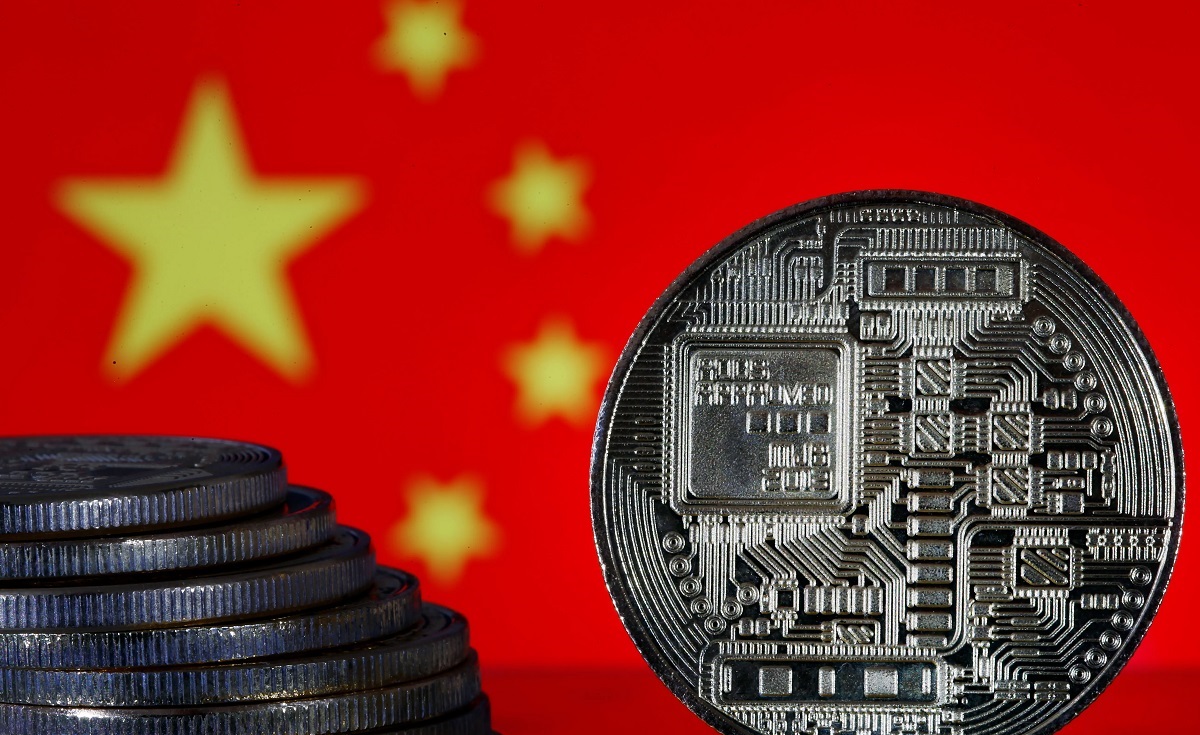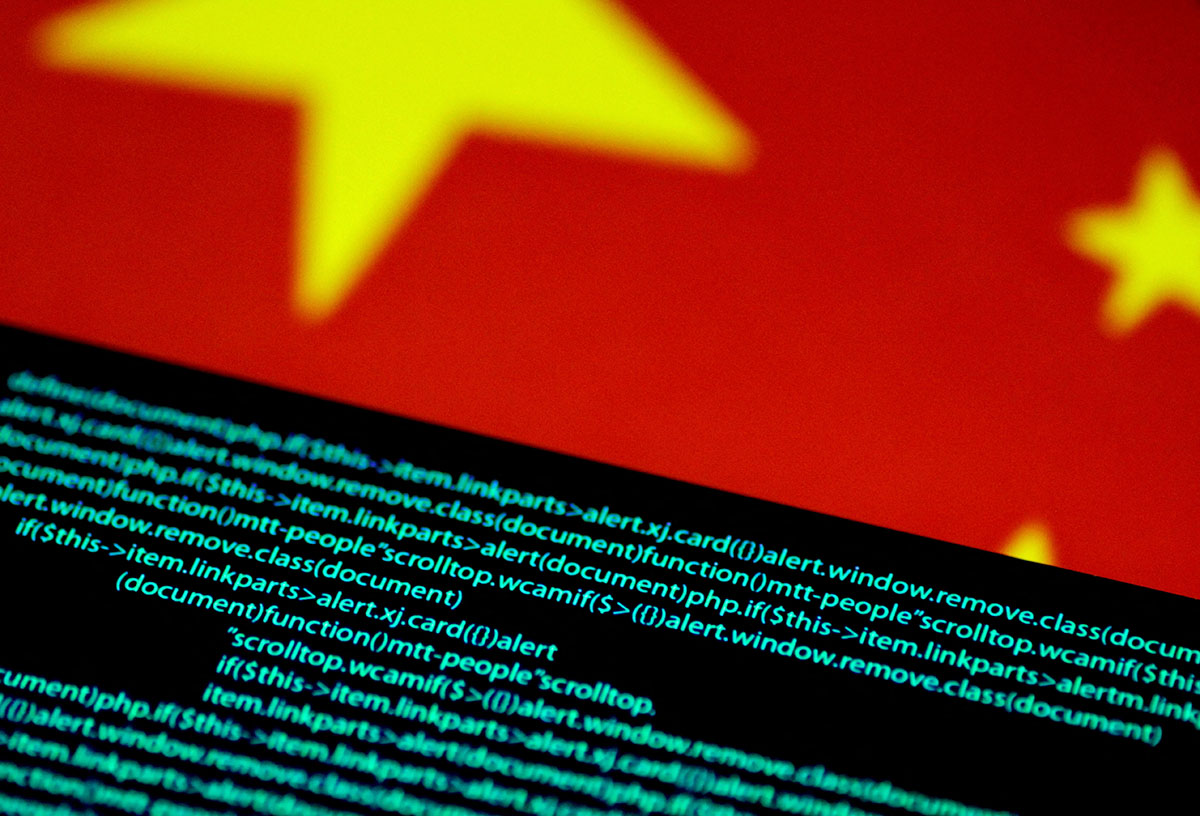Introduction
Digital currencies have taken the world by storm, and one country that has been at the forefront of this revolution is China. China’s experiment with digital currency has garnered significant attention, both domestically and internationally. The country’s Digital Currency Electronic Payment (DCEP) project has become a hot topic of discussion in financial and technological circles.
In recent years, digital currencies, such as Bitcoin and Ethereum, have gained immense popularity and disrupted traditional financial systems. These decentralized cryptocurrencies have provided an alternative to traditional banking systems, introducing concepts like blockchain technology and peer-to-peer transactions. However, China’s approach to digital currency differs significantly from these decentralized models.
China aims to establish a centralized digital currency system with the launch of the DCEP. This government-backed digital currency has the potential to transform the way people make payments, conduct transactions, and store wealth. With China being one of the largest economies in the world, the widespread adoption of the DCEP could have far-reaching implications.
The attention surrounding China’s digital currency experiment can be attributed to several factors. Firstly, the potential disruption it poses to traditional banking systems is a cause for concern and curiosity. The DCEP has the potential to change the way people interact with financial institutions, as it allows for direct peer-to-peer transactions without the need for intermediaries.
Secondly, the Chinese government’s increased control and surveillance capabilities provided by the digital currency have sparked both interest and skepticism. The DCEP would allow the government to track every transaction in real-time, enabling them to monitor the flow of money and potentially tighten regulations to combat illicit activities.
Another reason for the attention is China’s influence in global currency markets. As the world’s second-largest economy, any move by China has a significant impact. The launch and widespread adoption of the DCEP could potentially challenge the global dominance of the US dollar and reshape international trade and investment.
Additionally, China’s digital currency initiative is seen as a way to promote technological innovation and foster the growth of the digital economy. By encouraging the use of digital payments and embracing emerging technologies, the government hopes to propel China towards becoming a global leader in the digital realm.
Lastly, the DCEP is a direct response to the rise of cryptocurrencies, such as Bitcoin, and the threat posed by Facebook’s proposed Libra digital currency. China aims to establish its own digital currency as a viable and regulated alternative, safeguarding its financial sovereignty and reducing the dependence on existing decentralized cryptocurrencies.
The Rise of Digital Currencies
The rise of digital currencies has been a significant development in the financial world. Digital currencies, also known as cryptocurrencies, are virtual or digital representations of value that can be used as a medium of exchange. They utilize cryptography for security and operate independently of central banks or government regulations.
One of the key reasons for the popularity of digital currencies is their decentralized nature. Unlike traditional currencies that are controlled by central banks, digital currencies are based on blockchain technology, which allows for peer-to-peer transactions. This eliminates the need for intermediaries like banks, resulting in faster and more efficient transactions.
Bitcoin, introduced in 2009, was the first decentralized digital currency and remains the most well-known. It brought about a new era of financial innovation and challenged the existing financial system. With its limited supply and cryptographic security features, Bitcoin gained a reputation for being a store of value and a hedge against inflation.
Ethereum, another popular digital currency, introduced the concept of smart contracts. These contracts are self-executing agreements with the terms of the agreement directly written into code. This innovation opened up possibilities for decentralized applications (DApps) and enabled developers to create their own tokens and decentralized platforms on the Ethereum blockchain.
The rise of digital currencies has also been fueled by the increasing global demand for alternative payment methods. Traditional banking systems are often slow and costly, especially for international transactions. Digital currencies offer a faster and cheaper means of transferring funds across borders, making them attractive to individuals and businesses alike.
Moreover, digital currencies provide financial inclusion for the unbanked population. According to the World Bank, around 1.7 billion people worldwide do not have access to formal financial services. Digital currencies have the potential to bridge this gap and enable these individuals to participate in the global economy by providing them with a secure and accessible means of storing and transferring value.
However, the rise of digital currencies has not been without challenges. Concerns around security, volatility, and regulatory issues have been raised. The decentralized nature of digital currencies makes them susceptible to hacking and fraud, leading to instances of theft and loss. Additionally, the high price volatility of digital currencies has made them a subject of speculation and investment risk.
Regulatory authorities around the world have been grappling with the task of creating a legal framework for digital currencies. While some countries have embraced digital currencies and implemented regulations to protect users and combat illicit activities, others have taken a more cautious approach, citing concerns over money laundering, tax evasion, and consumer protection.
Despite these challenges, the rise of digital currencies continues to disrupt and reshape the financial landscape. As we move towards an increasingly digital world, it remains to be seen how digital currencies will further evolve and impact global economies, financial systems, and our everyday lives.
China’s Digital Currency Electronic Payment (DCEP)
China has taken a unique approach to digital currencies with its Digital Currency Electronic Payment (DCEP) project. The DCEP aims to establish a government-backed digital currency that will be widely accepted and used for daily transactions throughout the country.
The primary goal of the DCEP is to provide a secure, reliable, and convenient payment system for the Chinese population. It aims to replace physical cash and reduce reliance on traditional banking systems. Through the use of mobile apps and digital wallets, individuals and businesses will be able to easily make payments and transfer funds using the DCEP.
One of the key features of the DCEP is its centralization. Unlike decentralized cryptocurrencies like Bitcoin and Ethereum, the DCEP will be issued and controlled by the People’s Bank of China (PBOC), the country’s central bank. This centralized control gives the Chinese government the ability to track every transaction in real-time, providing them with increased insight and control over the flow of money.
The DCEP also incorporates advanced technologies such as blockchain and encryption to ensure the security and integrity of transactions. Blockchain technology provides transparency and immutability, making it difficult for fraudulent activities to occur. Encryption ensures the privacy and confidentiality of user information while maintaining the traceability of transactions for regulatory purposes.
China’s push for a government-backed digital currency also aligns with its broader objective of promoting a digital economy and technological innovation. By adopting the DCEP, China aims to lead the way in digital payments and foster the growth of the digital industry. This initiative has the potential to drive innovation in areas such as mobile payment solutions, financial technology, and blockchain applications.
Furthermore, the launch of the DCEP is seen as a response to the rise of decentralized cryptocurrencies, such as Bitcoin, and the potential threat posed by private digital currencies like Facebook’s Libra. As China has been cracking down on cryptocurrency exchanges and initial coin offerings (ICOs), the DCEP provides a regulated and controlled alternative that is backed by the government.
China’s digital currency experiment has drawn significant attention from both domestic and international observers. Its potential to disrupt traditional banking systems, increase government control and surveillance, influence global currency markets, encourage technological innovation, and address the challenges posed by decentralized cryptocurrencies are all factors that have contributed to its prominence in the digital currency landscape.
As China continues to develop and roll out the DCEP, its success or failure could have far-reaching implications that extend beyond the country’s borders. It has the potential to shape the future of digital currencies and provide valuable insights into the possibilities and challenges of centralized digital payment systems.
Potential to Disrupt Traditional Banking Systems
One of the key reasons why China’s experiment with digital currency has garnered so much attention is its potential to disrupt traditional banking systems. The Digital Currency Electronic Payment (DCEP) project aims to revolutionize the way people make payments and conduct transactions, potentially reducing the need for intermediaries like banks.
Traditionally, banking systems have acted as intermediaries for financial transactions, providing services such as money storage, lending, and payment processing. However, with the widespread adoption of digital currencies like the DCEP, individuals and businesses may have the ability to conduct transactions directly without the need for third-party intermediaries.
This disruption has the potential to revolutionize the financial industry by bypassing traditional banking systems and lowering transaction costs. By eliminating the need for banks to process each transaction, digital currencies can facilitate faster and more efficient peer-to-peer transactions. This increased efficiency may lead to reduced transaction fees and enhanced financial accessibility for individuals and businesses, particularly in areas where traditional banking services are limited.
Furthermore, the DCEP could provide financial inclusion for the unbanked population, who currently lack access to formal banking services. With the use of digital wallets and mobile apps, individuals without bank accounts can potentially transact and store value using the DCEP. This could empower and bring financial services to millions of individuals who have previously been excluded from the traditional banking system.
Additionally, the disruption to traditional banking systems through the adoption of digital currencies may lead to new business models and innovative financial services. As the need for physical banks diminishes, financial institutions could redirect their focus towards digital services, resulting in increased competition and a wider range of financial products and services for consumers to choose from.
However, this disruption may not come without challenges. Traditional banks may face the risk of losing their relevance and market share if they fail to adapt to the changing landscape. They will need to embrace digital currencies and develop new strategies to remain competitive in a digital economy.
Moreover, the potential disruption to traditional banking systems also raises regulatory concerns. Central banks and financial regulators will need to establish guidelines and regulations to ensure the stability, security, and integrity of digital currency transactions. This includes implementing measures to combat money laundering, fraud, and other illicit activities in a digital currency ecosystem.
In summary, China’s experiment with digital currency has the potential to disrupt traditional banking systems. By enabling direct peer-to-peer transactions and reducing the reliance on intermediaries like banks, digital currencies like the DCEP can revolutionize the financial industry. This disruption could lead to increased financial inclusion, lower transaction costs, and the emergence of new business models and financial services. However, it also brings regulatory challenges that need to be addressed to ensure the stability and integrity of the digital currency ecosystem.
Increased Control and Surveillance by the Chinese Government
Another significant aspect of China’s experiment with digital currency is the increased control and surveillance it grants the Chinese government. With the Digital Currency Electronic Payment (DCEP) project, the Chinese government aims to track and monitor every transaction in real-time, providing them with unprecedented insight and control over the flow of money.
The centralization of the DCEP, with the People’s Bank of China (PBOC) issuing and controlling the digital currency, gives the government the ability to monitor and regulate financial activities at a granular level. By digitizing currency and utilizing advanced technologies like blockchain and encryption, the Chinese government can track the movement of funds, identify potential illicit activities, and enforce regulatory compliance.
This increased control and surveillance has raised both interest and skepticism regarding privacy and individual freedoms. While the government argues that the DCEP can help combat money laundering, fraud, and other illegal activities, concerns have been voiced about the potential misuse of personal financial information and the infringement on privacy rights.
Given the Chinese government’s record of strict control over internet and information flow, the DCEP’s implementation could further extend its surveillance capabilities. It could provide the government with a comprehensive view of individuals’ financial behaviors, including their spending habits, income sources, and even social connections through transaction patterns. This level of surveillance raises questions about privacy, personal autonomy, and the extent of state control over financial matters.
Furthermore, the centralization of the DCEP raises concerns about the potential abuse of financial power by the government. With the ability to freeze or seize funds digitally, the government could potentially exert pressure or control over individuals and businesses based on their financial activities. This could have wide-ranging implications, particularly in terms of economic freedom and political dissent.
However, it’s worth noting that the Chinese government has stated that the DCEP will still provide individuals with a reasonable degree of privacy and anonymity. While all transactions will be traceable, the specific identities of individuals involved will be protected. Nonetheless, questions remain about how much control and surveillance the government can exert and how it may develop in the future.
In summary, China’s digital currency experiment enhances the control and surveillance capabilities of the Chinese government. While it aims to combat illegal activities and enforce financial regulations, concerns have been raised regarding privacy, personal autonomy, and the potential abuse of power. Striking a balance between the benefits of increased control and the protection of individual rights and freedoms will be a crucial aspect of successfully implementing and regulating the DCEP.
Influence in Global Currency Markets
China’s experiment with digital currency has significant implications for global currency markets. As the world’s second-largest economy, any move by China has the potential to have a profound impact on the international financial landscape.
The launch and widespread adoption of the Digital Currency Electronic Payment (DCEP) could challenge the global dominance of the US dollar as the primary reserve currency. With the DCEP, China aims to promote its currency, the yuan, and increase its international acceptance and influence. This could lead to a shift in global currency dynamics and have implications for international trade and investment.
Currently, the US dollar plays a dominant role in global transactions, international trade, and financial markets. The widespread use of the DCEP could potentially provide an alternative to the US dollar, reducing its dominance and diversifying the global currency landscape. This would provide countries with more options and potentially decrease their dependence on the US dollar, which has both economic and geopolitical implications.
Moreover, the DCEP could facilitate international transactions and cross-border trade, making it easier for businesses to conduct transactions with Chinese partners. With faster and more efficient payment processes, the DCEP could lead to increased trading volumes between China and its global counterparts.
Additionally, the DCEP could play a role in countries’ currency reserves and foreign exchange holdings. Central banks may consider including the yuan as a component of their foreign exchange reserves, diversifying their holdings and potentially reducing their exposure to the US dollar. This could further enhance the international standing and influence of the Chinese currency.
However, the influence of the DCEP in global currency markets will also be influenced by factors such as regulatory frameworks, trust, and acceptance by other countries. The willingness of other nations to adopt and transact with the DCEP will be crucial for its success as an international currency.
Moreover, there are potential challenges and concerns surrounding the DCEP’s influence in global currency markets. The Chinese government’s control and surveillance capabilities through the DCEP could raise concerns among other countries about their financial sovereignty and privacy. Countries may be cautious about fully embracing a currency issued and controlled by a foreign government.
In summary, China’s experiment with digital currency has the potential to challenge the dominance of the US dollar and influence global currency markets. The DCEP could provide an alternative to the US dollar in international transactions, increase the influence of the Chinese yuan, and reshape international trade and investment. However, its success in global currency markets will depend on various factors, including regulatory frameworks, international acceptance, and trust from other nations.
Encouraging Technological Innovation and Fostering Digital Economy
China’s experiment with digital currency, particularly the Digital Currency Electronic Payment (DCEP) project, is not just about transforming the financial landscape but also about fostering technological innovation and promoting the growth of the digital economy.
By embracing digital currencies and encouraging their widespread adoption, China aims to position itself as a global leader in the digital realm. The use of digital currencies like the DCEP will require the development and implementation of cutting-edge technologies, such as blockchain, encryption, and mobile payment solutions. This push for innovation will not only benefit the financial sector but also have spillover effects in other industries.
The adoption of the DCEP is expected to drive technological advancements in areas such as mobile payment solutions, financial technology (FinTech), and blockchain applications. Mobile payment platforms have already gained significant traction in China, and the DCEP will further accelerate the shift towards digital payments. This will foster the development of innovative mobile payment solutions that enhance convenience and security for consumers.
Moreover, the DCEP project will likely result in the growth of financial technology companies and startups. As the adoption of digital currencies increases, there will be a demand for advanced financial technology solutions such as digital wallets, mobile apps, and payment gateways. This will create opportunities for entrepreneurs and innovators to develop and offer new digital financial services.
Furthermore, the integration of blockchain technology in the DCEP has the potential to drive blockchain innovation beyond the financial sector. Blockchain, with its decentralized and transparent nature, offers opportunities for secure and efficient data management across various industries. The adoption of blockchain in the DCEP could inspire the development of blockchain-based applications in areas such as supply chain management, healthcare, and digital identity verification.
The promotion of the digital economy is another fundamental aspect of China’s digital currency experiment. By encouraging the use of digital currencies, the government aims to create an ecosystem that fosters digital innovation and drives economic growth. The digital economy encompasses a wide range of activities, including e-commerce, online services, and the development of digital skills.
The adoption of digital currencies can facilitate online transactions and promote the expansion of e-commerce. With the DCEP, individuals and businesses can engage in digital transactions without the barriers of traditional financial systems, such as transaction fees and geographical limitations. This can fuel the growth of online businesses, particularly for small and medium-sized enterprises (SMEs), and enhance cross-border trade.
Moreover, the use of digital currencies encourages the development of digital skills and enhances financial literacy. As individuals become more familiar with digital payments and blockchain technology, they can apply this knowledge to other aspects of the digital economy, including digital entrepreneurship and innovation.
In summary, China’s experiment with digital currency is not only about transforming the financial landscape but also about encouraging technological innovation and fostering the growth of the digital economy. By promoting the adoption of digital currencies like the DCEP, China aims to position itself as a global leader in digital innovation, driving advancements in financial technology and blockchain applications. Additionally, the use of digital currencies can enhance the digital economy by fueling e-commerce, promoting online transactions, and developing digital skills and entrepreneurship.
Response to Cryptocurrencies and the Libra Threat
China’s experiment with digital currency, particularly the Digital Currency Electronic Payment (DCEP) project, can be seen as a response to the rise of cryptocurrencies and the threat posed by private digital currencies like Facebook’s Libra. China aims to establish its own digital currency as a regulated and government-backed alternative to decentralized cryptocurrencies.
The rapid growth and popularity of cryptocurrencies, such as Bitcoin and Ethereum, have raised concerns among governments and central banks around the world. These decentralized cryptocurrencies operate independently of government control and traditional financial systems. Their rise has led to debates about financial stability, consumer protection, and the need for regulatory oversight.
China has taken a proactive approach to address these concerns by developing its own digital currency and asserting control over the digital payments landscape. The DCEP provides a regulated and centralized alternative to cryptocurrencies, offering the government increased control and surveillance capabilities. This aligns with China’s overarching goal of maintaining financial stability and minimizing risks associated with unregulated digital currencies.
Additionally, China’s digital currency initiative can be seen as a response to the proposed digital currency by Facebook, known as Libra. Libra, initially met with skepticism and regulatory concerns, posed a potential threat to the current global financial system due to its potential widespread adoption and user base. The announcement of Libra forced governments, including China, to take a closer look at developing their own digital currencies to maintain control over monetary policies and financial systems.
China’s digital currency project positions the country as a direct competitor to Libra and other private digital currencies. By offering a government-backed digital currency with centralized control, China aims to appeal to users who may have concerns about the stability and legitimacy of private digital currencies like Libra.
Furthermore, the DCEP’s potential influence in global currency markets can directly impact the adoption and acceptance of private digital currencies. As central banks and governments explore the implementation of digital currencies, they may be less inclined to allow private digital currencies like Libra to operate within their jurisdictions without proper regulations and oversight.
However, it is worth noting that the DCEP is not solely a response to cryptocurrencies and Libra. The project also aligns with China’s broader goals of promoting technological innovation, fostering digital economic growth, and increasing financial inclusion. By addressing the challenges posed by cryptocurrencies and private digital currencies, China aims to position itself as a leader in the digital finance realm and strengthen its global standing.
In summary, China’s experiment with digital currency, particularly the DCEP, can be seen as a response to the rise of cryptocurrencies and the threat posed by private digital currencies like Libra. China aims to establish its own government-backed digital currency as a regulated and centralized alternative. By doing so, China seeks to address concerns related to financial stability, maintain control over monetary policies, and compete with private digital currencies. However, the DCEP also aligns with China’s broader objectives of promoting technological innovation and fostering digital economic growth.
Conclusion
China’s experiment with digital currency, especially the Digital Currency Electronic Payment (DCEP) project, has gained significant attention due to its potential to disrupt traditional banking systems, increase government control and surveillance, influence global currency markets, encourage technological innovation, and respond to the rise of cryptocurrencies and the threat of private digital currencies like Libra.
The DCEP has the potential to revolutionize the way people make payments and conduct transactions, reducing reliance on traditional financial systems and intermediaries like banks. It aims to provide a secure and convenient payment system, while also promoting financial inclusion for the unbanked population.
The increased control and surveillance capabilities embedded within the DCEP have raised concerns about privacy, personal autonomy, and the potential abuse of financial power by the Chinese government. Striking a balance between the benefits of increased control and the protection of individual rights and freedoms will be crucial for the successful implementation and regulation of the DCEP.
China’s digital currency experiment also has the potential to influence global currency markets. The adoption of the DCEP could challenge the dominance of the US dollar as the primary reserve currency, reshape international trade and investment, and diversify the global currency landscape. However, its influence will depend on factors such as regulatory frameworks, trust, and acceptance by other countries.
Furthermore, China’s experiment with digital currency aims to encourage technological innovation and foster the growth of the digital economy. By promoting the adoption of digital currencies, China seeks to advance financial technology, drive blockchain innovation, and stimulate the development of digital skills and entrepreneurship. This initiative has the potential to position China as a global leader in digital innovation.
In conclusion, China’s experiment with digital currency through the DCEP project represents a significant undertaking with wide-ranging implications. It paves the way for a more digital and interconnected financial landscape, but also raises important considerations regarding privacy, financial control, and the balance between regulation and innovation. As China continues to develop and refine its digital currency initiatives, the world will be watching closely to see the impact and potential future direction of this groundbreaking project.

























